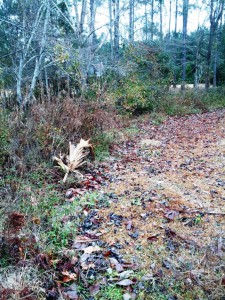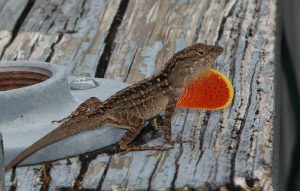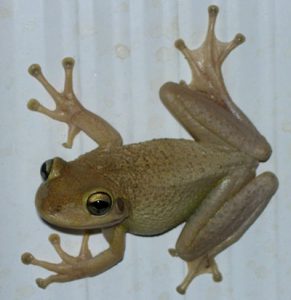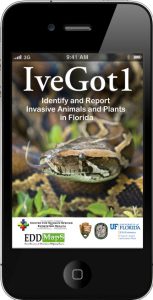During this week we have read about what an invasive species is, how they got here, which ones have been here awhile, which are new potential threats, and why we should even care about this. All important things to know when you are trying to understand invasive species. But what can you do about it? Is there anything that can be done from your side?
Yes… there is.
The first step in helping to manage invasive species is to learn which plants and animals in your landscape are invasive. Many of the animals are easy, but the plants not so much. I have already heard from a few of you about Mimosa – like me, we had no idea it was on the list. But we should know which plants are and are not. How do you learn this?
Unfortunately, Six Rivers CISMA’s new website is not live yet. It should be by April 1, 2022, and when it is there will be information for you there. Another way is to check EDDMapS (www.EDDMapS.org). You can search the distribution map at the tool bar, type in the name of the species you have a question about and see if there are records. If it is, this does not mean it is invasive in Florida, just that it is invasive somewhere, but it is a start. If it is a plant (and most have questions about plants more than animals) you can search the University of Florida IFAS Assessment (https://assessment.ifas.ufl.edu/). This database will give you the status of the plant in Florida. However, you will need to know the scientific name of the plant. You can find this by googling the common name and finding it that way. Of course, you can always contact your county extension office.
Here is one for the SCUBA divers out there. I met with a couple of experts a year ago or so to discuss a list of 20 potential nonnative fish threats to the Florida Keys. We discussed which of these could become threats in the northern Gulf, could tolerate our climate. It was decided that we should tell divers if they see any fish that looks out of place, never been here before sort of thing, get a photo and contact us at the extension office. We will go from there.
The second step is to conduct a survey of your yard or business. You probably know your yard already, but most have crews handle the landscaping for their businesses. You can conduct the search for plants but let your landscaping crew know your interest in any unusual animals they may see. You can also participate in community surveys with the county extension office. As COVID restrictions begin to lift, we will be conducting more of these in public areas in the coming months. Check our website calendar.
Be aware of what you are buying and bringing home this spring during gardening time. Not just the plant that you are buying, but who might be hitchhiking on it. Many of the ornamental plants people purchase are grown in large nurseries in central and south Florida. We believe this is how the Brown Anole, and now, the Cuban Treefrog are getting here. Slugs, lizards, frogs, all sorts of creatures can hitchhike on your plants. Just give it a good look over and if you think you have a potential invasive, call us.
The third step is to report them. As you saw in the numbers, and I did not post the Dirty Dozen numbers, but all of them are under reported. Having the public report these to EDDMapS gives managers a better idea of the extent of the problem. Note: You are not allowed to report an invasive species on private property without their permission, please get this first.
How do you report to EDDMapS?
There are two options.
One, go to their website (www.EDDMapS.org). You will see “report a sighting” on their tool bar. Report here. It will ask for a password, so you will need to set up an account. It will ask for area covered; estimating is fine. It will ask for Latitude and Longitude, most phones can give you this. Note: input longitude as a negative number or it will post the location in the eastern hemisphere. It will want a photograph so that it can be verified. This is important. Many are nervous reporting because they are not sure they have identified it correctly. No worries. All records sent in are verified before they are posted. A good photograph will allow the verifiers to do this. Send the record, if they believe it is incorrect, they will not post it.
The second option is to use the IveGotOne app. This app handles a lot of the needs for EDDMaps. You see the plant, aim the phone, take the picture, and tell it the area covered, send. Everything else is taken care of. REMEMBER, you must get permission to do this on private property. You can get this app from the EDDMapS website or your favorite app store.
The fourth step is to remove it. This is the hard part.
Hard in the sense that most can remove small weeds and vines and are happy to do so. It is harder when there is a large infestation or if it is an animal – it is not easy to euthanize an animal, for anyone. How do we handle those harder ones?
With plants, contact us at the extension office – or visit the Six Rivers CISMA website when it is live. There has been a lot of research conducted on different methods of removal that will be effective and little impact on the environment. Many do not want to use herbicides, and we get that, but in some cases that may be the only option. So, which herbicides are the safest to use and in what concentrations? Again, give us a call. Interestingly, I recently heard from a local contractor who removes aquatic plants from ponds. He said he could do the same for invasive species. We hope to find a lot of such contractors who might be able to help with large problems that you cannot do yourself. Stay tuned.
With animals it is even harder. Even though there are humane ways to do this, most people cannot just put animals to sleep. Most county animal control units do not deal with invasive species. Instead, you would call the Florida Fish and Wildlife Conservation Commission. They have a number you can call Monday – Friday during normal business hours – (888) 483-4681. If it is after hours, or on the weekend, call (888) 404-FWCC (3922). Either FWC, or a licensed contractor, will come to deal with it. I will let you know they are probably not coming for the Brown Anoles so many have in their yards at the moment. There are just too many of them. Note: it is illegal to transport an invasive species in Florida. If you have a problem please call, do not bring it in.
If you feel you could euthanize an invasive animal first make sure on the identification. Get a good photo and send to your county extension office. If it is, your extension office can give you information on how to humanely euthanize the animal.
Note that there is nothing illegal about having invasive species in your yard. You will not be cited for having such. It is just many do want to remove them.
We hope you have learned a lot this week about invasive species. If you have, email me at roc1@ufl.edu and let me know. And if you decide to report or remove a species, I would like to know this as well.
Hope all is well with everyone.
- Our Environment: Part 11 – We Need Water - July 7, 2025
- Our Environment: Part 10 – Improving Agriculture - June 20, 2025
- Marine Creatures of the Northern Gulf – Snails and Slugs - June 20, 2025





